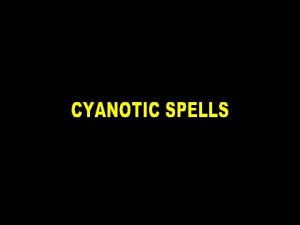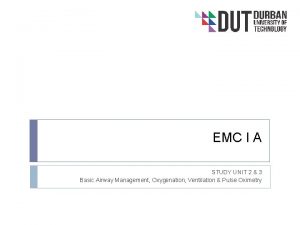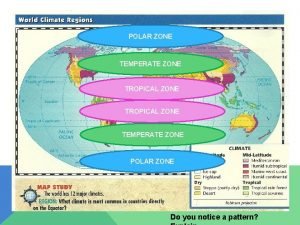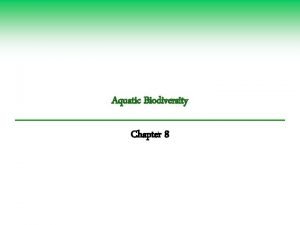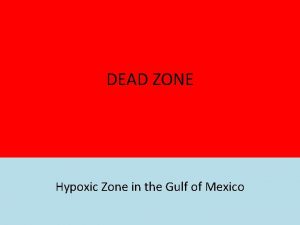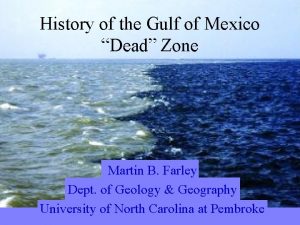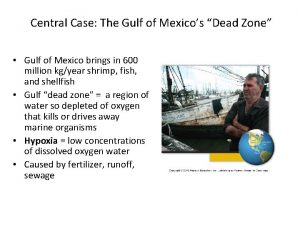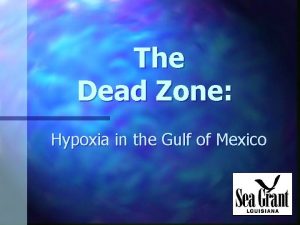DEAD ZONE Hypoxic Zone in the Gulf of







- Slides: 7

DEAD ZONE Hypoxic Zone in the Gulf of Mexico

What is it? • The hypoxic zone in the northern Gulf of Mexico refers to an area along the Louisiana. Texas coast in which water near the bottom of the Gulf contains less than 2 parts per million of dissolved oxygen, causing a condition referred to as hypoxia.


What is hypoxia? • Low-oxygen areas in the world's oceans and large lakes, caused by "excessive nutrient pollution from human activities coupled with other factors that deplete the oxygen required to support most marine life in bottom and near-bottom water. (NOAA). “ • Hypoxia can cause fish to leave the area and can cause stress or death to bottom dwelling organisms that can’t move out of the hypoxic zone. Excess nutrients promote algal and zooplankton growth. The associated organic matter sinks to the bottom where it decomposes, consuming available oxygen.

Timeline • 1972: Hypoxia is discovered in the Gulf of Mexico. It is a “dead zone” stretching thousands of square miles mostly devoid of oxygen and unable to support aquatic life, largely the result of fertilizer from farm fields and sewage pollution draining into the Mississippi River, from hundreds of miles upstream. • 1985: Annual Gulf hypoxia measurements begin. The Gulf takes runoff from 41 percent of the continental U. S. , all or parts of 31 states.

Eutrophication Dead zones are often caused by the decay of algae during algal blooms, like this one off the coast of La Jolla, San Diego, California.

Aquatic Dead Zones Around the World • Red circles on this map show the location and size of many of our planet’s dead zones. • Black dots show where dead zones have been observed, but their size is unknown. • Dead zones tend to occur downriver of places where human population density is high (darkest brown). • Darker blues in this image show higher concentrations of particulate organic matter, an indication of the overly fertile waters that can culminate in dead zones.

